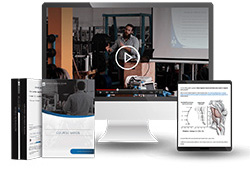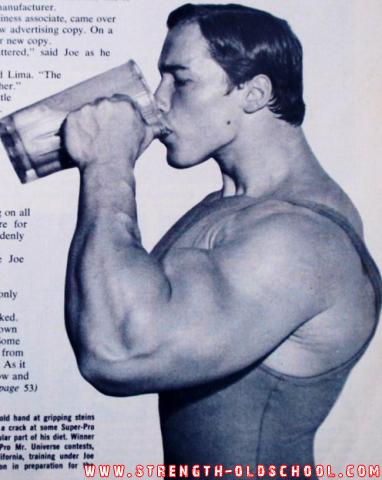Workout nutrition is a scam
There are many studies that show workout nutrition increases protein balance and muscle gains from training. Many studies expose the benefits of post- and pre-workout nutrition and many studies even show that there is an ”˜anabolic window’: a time period around the training session in which consuming protein has extra effect.
Formulated otherwise, the anabolic window theory posits that protein intake in close temporal proximity to training sessions results in more growth than consuming the same amount of protein at other points during the day. The theory is that the training session somehow primes the body for nutrient partitioning to muscle instead of fat.
An often mentioned argument for this is that the protein balance regulation during the anabolic window is mediated by insulin. Readers of this site should already be aware that this is false and that there are no benefits to consuming carbohydrates post-workout. I have also previously shown that there are also no benefits to consuming BCAAs during this anabolic window. Now, I will show you that the anabolic window is not what most people think it is.
The anabolic window is a myth that is easy to fall for due to all the studies that seemingly support its existence. However, a closer look at the methodologies employed in these studies reveals that they do not support the use of workout nutrition at all. They just support the consumption of protein in general. Practically all of these studies employed one or both of these 2 methodological pitfalls.
- Methodological failure 1: The studies didn’t have an appropriate control group. Usually, they compared a workout nutrition group to a placebo group. That’s fine for medicines, but what you really want for these studies is a control group that consumed the same amount of protein, only during a different time period. Without such a control group, you have no internal validity: you don’t know if the workout nutrition was beneficial because it contained protein or because that protein was ingested during the anabolic window.
- Methodological failure 2: The participants weren’t given enough protein the days before and of the training session and fasted overnight until whenever they received their workout nutrition. In this scenario, receiving nutrition faster is obviously better because the participants were starving, at least in bodybuilding terms.
To demonstrate the presence of the anabolic window, what you want is a study that looks like this. Cribb & Hayes (2006) demonstrated that consuming protein in close temporal proximity to training at midday yields superior gains for body composition and strength than consuming the same amount of protein during the morning and the evening. That seems like pretty conclusive evidence for the importance of the anabolic window, so what’s wrong with it? The leading author, Paul J. Cribb, works for a notorious supplement company, AST Sport Science, that sponsored the study. They’re known for sponsoring/performing suspicious studies that exhibit the benefits of their products. If you look at the result of this study, they’re suspiciously unidirectional and the effect sizes are suspiciously large. For example, the average results for the anabolic window group of advanced bodybuilders in a 10 week time period were: a 6.2 lb muscle gain, a 1.1% body fat loss and a 26.8 lb strength gain on the bench press. Mind you, these were not rookies. These bodybuilders on average already benched 279.2 lb (1RM) and were drug-free. Sounds legit…
Other studies employing the same design as above but without financial support from supplement companies found something else entirely, namely that consuming protein right before and after training yielded the exact same results as consuming that protein earlier and later, respectively.
- Verdijk et al. (2009) found that a group consuming protein immediately before and after training at midday did not gain more strength or more muscle than a group consuming adequate protein throughout the day without consuming anything during the ”˜anabolic window’.
- Wycherley et al. (2010) found that there was no difference in muscle retention, strength gains or fat loss between consuming protein right after training and consuming the same amount of protein 2 hours later during a weight loss diet in which adequate protein was ingested.
I know some people are going to complain about the samples in these studies not being representative of male bodybuilders, because everyone knows about about external validity yet few people pay attention to internal validity, even though there is often no reason why specific populations, such as the elderly or females, would respond differently to primitive physiological manipulations. So, I saved the best for last.
- Hoffman et al. (2009) found that protein consumption right before and after training yielded the exact same results as consuming that protein several hours before and several hours after training. “Results indicate that the time of protein-supplement ingestion in resistance-trained athletes during a 10-wk training program does not provide any added benefit to strength, power, or body-composition changes.”
Before dismissing nutrient timing as a whole completely, there’s a caveat that I want to stress greatly. In all of these studies, the participants consumed protein somewhere before and somewhere after training. The take home message is that the exact timing of protein becomes irrelevant in many such scenarios, because you’ll be in a fed state all day. For that reason, these results do not support, for example, fasted training, and they do not imply that nutrient timing of all kinds is useless. I will cover nutrient timing and fasted training extensively in future articles.
Conclusion
There is no such thing as a miniscule window around your training sessions where you have to consume protein or lose out on your gains.
 Want more content like this?
Want more content like this?
Then get our free mini-course on muscle building, fat loss and strength.
By filling in your details you consent with our privacy policy and the way we handle your personal data.

